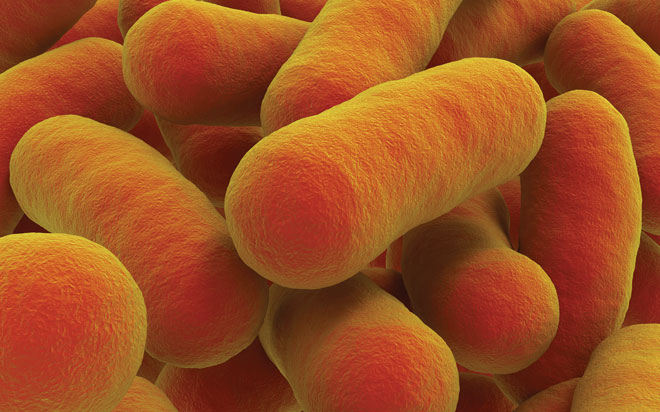NF Validation mark by AFNOR Certification
- Like
- Digg
- Del
- Tumblr
- VKontakte
- Buffer
- Love This
- Odnoklassniki
- Meneame
- Blogger
- Amazon
- Yahoo Mail
- Gmail
- AOL
- Newsvine
- HackerNews
- Evernote
- MySpace
- Mail.ru
- Viadeo
- Line
- Comments
- Yummly
- SMS
- Viber
- Telegram
- Subscribe
- Skype
- Facebook Messenger
- Kakao
- LiveJournal
- Yammer
- Edgar
- Fintel
- Mix
- Instapaper
- Copy Link
Posted: 20 June 2016 | Stéphanie Sammartano, Senior Certification Engineer, NF Validation Certification Manager (AFNOR Certification) | No comments yet
AFNOR Certification is the leading certification and systems, services, products and competencies assessment body in France and one of the top-ranking leaders worldwide. The AFNOR group’s Certification branch handles the two best-known quality marks on the market: AFAQ and NF.


AFNOR Certification delivers a portfolio of over 500 service solutions. Boasting French national and international accreditation, AFNOR Certification offers exemplary outreach through 27 agencies in five continents and 13 French regional delegations. It charters support from 1500 qualified auditors to meet the needs of a customer base spanning 60,000 sites worldwide. AFNOR Certification manages the leading certification programme for alternative methods in Europe under the NF Validation mark. The NF Validation scheme has been accredited by Cofrac which is a full member of E.A. (European Accreditation).
ISO 16140 part 2
Recently the ISO 16140 standard has been revised considerably and will be officially released in mid-2016. A new ISO 16140-series is going to replace the first version of ISO 16140 (published in 2003). The need for various ways to validate or verify methods has led to the elaboration of a standard in six parts; ISO 16140 part 2, for example, corresponds to the protocol for the validation of alternative (proprietary) methods against a reference method validation of proprietary alternative methods.
New concepts have been developed in order to move on an international harmonisation between ISO criteria and AOAC guidelines. For some parts of the validation study, it also now offers user friendly and decision making tools with the introduction of Acceptability Limits (AL). A new classification of food categories have also been defined taking into account the food manufacturing process and international prevalence related to microbiological risks. Moreover, now at least five categories of food shall be studied to claim as validated scope ‘broad range of food’ (whereas before, testing four categories of food, adding the category for environmental samples, allowed to validate ‘all food products’). Focusing by type of alternative methods, the new experimental design is still comparable to the previous one for qualitative study – with the main differences being with the calculation/interpretation aspects. For quantitative study, the impact is more important with the introduction of a totally new concept: the accuracy profile study.
All these changes imply for AFNOR Certification, and all other validation organisations using the ISO 16140-2 protocol, to update the validation studies of all alternative validated methods (at least with a re-interpretation of previous data according to the new additional criteria and, if needed, additional assays).
AFNOR Certification has been working with its Technical board and Expert laboratories in order to implement the new requirements with regard to the European microbiological criteria and also in view of harmonisation with other international validation programmes such as AOAC-PTM. The new requirements in ISO 16140-2 should be implemented at the latest during the NF Validation renewal of the kits already certified and as of now for new kits requesting validation.
Main aspects of validation
The European regulation for microbiological criteria, EC 2073/2005 mentions the ISO/CEN methods (reference methods) that should be used for performing the food analysis, and defines the framework for the use of alternative microbiological methods in place of the reference methods. Any alternative method should be used for food testing in Europe if evaluated by a third-party organisation, against the corresponding reference method and according to the international standard ISO 16140-2.
The NF Validation mark fulfills the requirements of the regulation for European recognition of alternative methods, as we are a certification body implementing the ISO 16140-2 validation protocol for validation study and taking as a reference the CEN/ISO methods cited in the regulation.
The purpose of this certification is to assess that performances of an alternative method are comparable to the ones of the reference method, for a defined target and a given scope. The NF Validation scheme is based upon a complete certification process, including audits performed by auditors on the production site of the kits, as well as technical validation studies conducted by qualified expert laboratories. The certification decision is then taken by AFNOR Certification based upon both results of the validation study and conclusions of the quality audit performed in parallel. Once the alternative method is certified, AFNOR Certification carries out regular monitoring in order to check and guarantee users that certified methods comply at all times with the requirements of the NF VALIDATION mark.
Method of validation study
The validation study is performed according to the ISO 16140-2 standard, completed to specific requirements defined by the NF Validation Technical Board (i.e. confirmation cases of presumptive positive samples; percentage of naturally contaminated samples; artificial contamination levels of samples with study in fractional recovery; list of Salmonella strains, etc.).
The validation study consists of comparing the alternative method against the reference method in 2 phases: (1) a method comparison study carried out in the organising laboratory, and (2) an interlaboratory study carried out in different laboratories. Experimental design and calculations/interpretations depend on the type of alternative method to be validated (qualitative or quantitative).
In the context of NF Validation, all validation studies (projects and results) are reviewed by a Technical Board (experts committee in microbiology and statistical design) whose members represent all the interests at stake in certification (users Labs, methods developers, technical organisations).
ISO 16410 – 2 validation study for Listeria
As part of the NF validation for AFNOR certification of Neogen’s ANSR® for Listeria, the France-based expert laboratory, ADRIA Développement, conducted a method comparison study of food and environmental samples. The study compared Neogen’s ANSR® for Listeria (kit 9871) in accordance with ISO 16140-2 (FDIS 2015) with the reference method, ISO 11290-1/A1 (2004). New Food asked Neogen for their opinion on the revised ISO 16140-2 standard.
What is AFNOR Certification and what does it mean to Neogen?
The certification is the label given by AFNOR to show that the validation followed the correct protocol and that the performance was as expected.
The NF Validation Certification by AFNOR means that laboratories can use Neogen’s ANSR® for Listeria as an alternative method. This should reduce the need for a full scale internal validation which means that the ANSR method should be easier to implement.
In your opinion, were there any benefits of the revised standard?
The revised ISO 16140 part 2 standard includes new classifications for food categories and at least five categories are necessary for inclusion, as opposed to four for the previous standard. This means that a higher number of samples and a wider range of sample types are included in the study, which is more comprehensive.
Samples are also included with lower levels of contamination to challenge the method more thoroughly.
Acceptance criteria are fixed and the data from an NF Validation study can also be used for an AOAC-RI validation. This reduces the time and resource for companies who are seeking both certifications.
What is the ANSR Listeria method?
The ANSR for Listeria method is a rapid molecular test for pathogen detection. It is an amplified nucleic single-temperature reaction (ANSR) and utilises patent-pending, unique amplification reaction technology at a constant temperature.
ANSR provides genetic level detection of low level specified targets in as little as 10 minutes following enrichment.
Could you give a brief explanation of the pooling protocol?
The Wet pooling protocol allows samples from different matrice types to be combined. Combined samples can then be screened for the presence of all Listeria species.
Depending on the positive rate of the laboratory, up to 10 samples can be tested in one assay allowing up to 160 samples to be run at one time. Wet pooling reduces the time and resource required to process large numbers of samples.
About the author
Stéphanie Sammartano is currently working as a Certification Manager for AFNOR Certification – a certification body acting in several areas including proprietary methods validation according to the ‘NF VALIDATION Scheme’. She has been working there for seven years, in charge of NF VALIDATION certification activities. Previously, she worked as a project manager for a regional association promoting food quality labels, and before that for a food manufacturing company in a Suppliers Quality Department. She has a Master’s degree in food biochemistry and microbiology, completed by a qualification diploma in Quality Security Environment.







